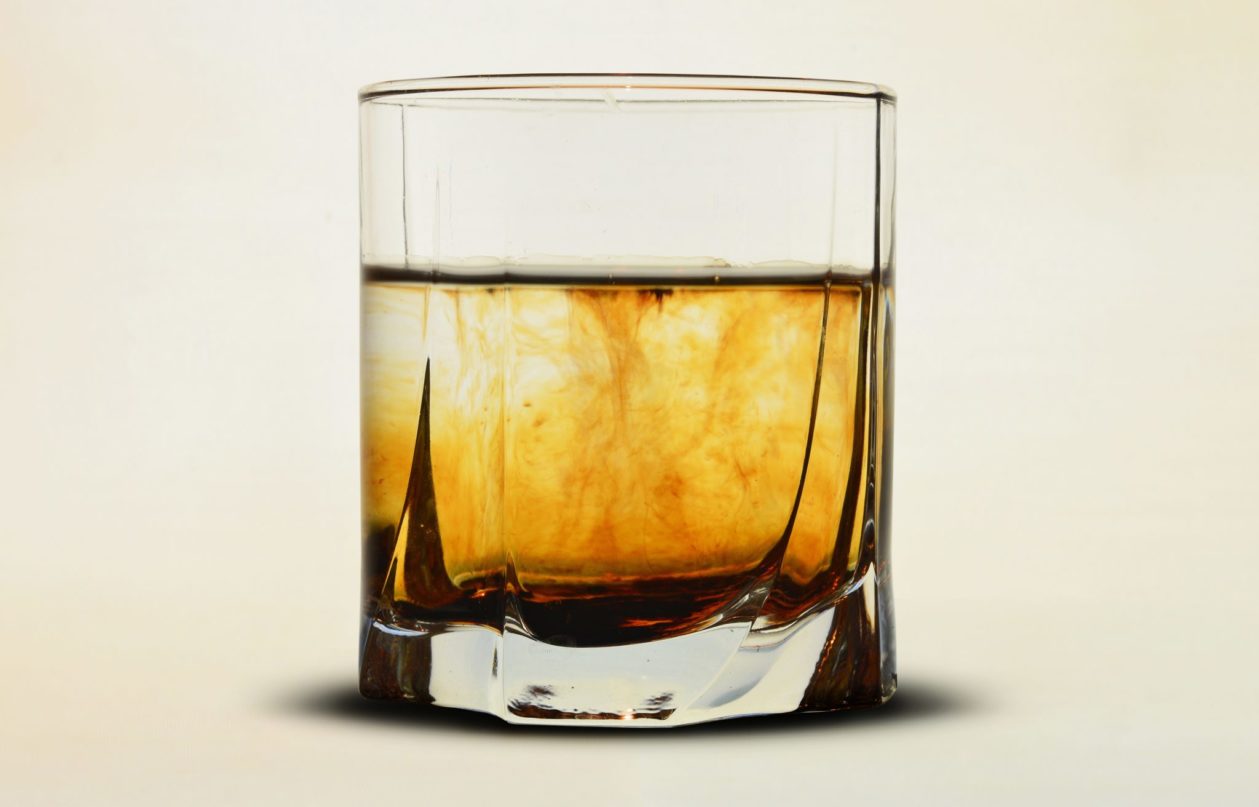Since the dawn of whiskey-drinking, the beloved brown spirit has been heralded as a “man’s drink.” But the world is changing in more ways than one these days, and the consumption of spirits is a part of that. With women representing almost 30 percent of whiskey drinkers in the U.S. (up from 15 percent in the 1990s) and being responsible for up to 70 percent of alcohol purchasing decisions for the home, I decided to ask some of the industry’s top distillers and executives why this stigma still surrounds whiskey. According to Elizabeth McCall, master distiller at Woodford Reserve, the stereotype has historic roots.
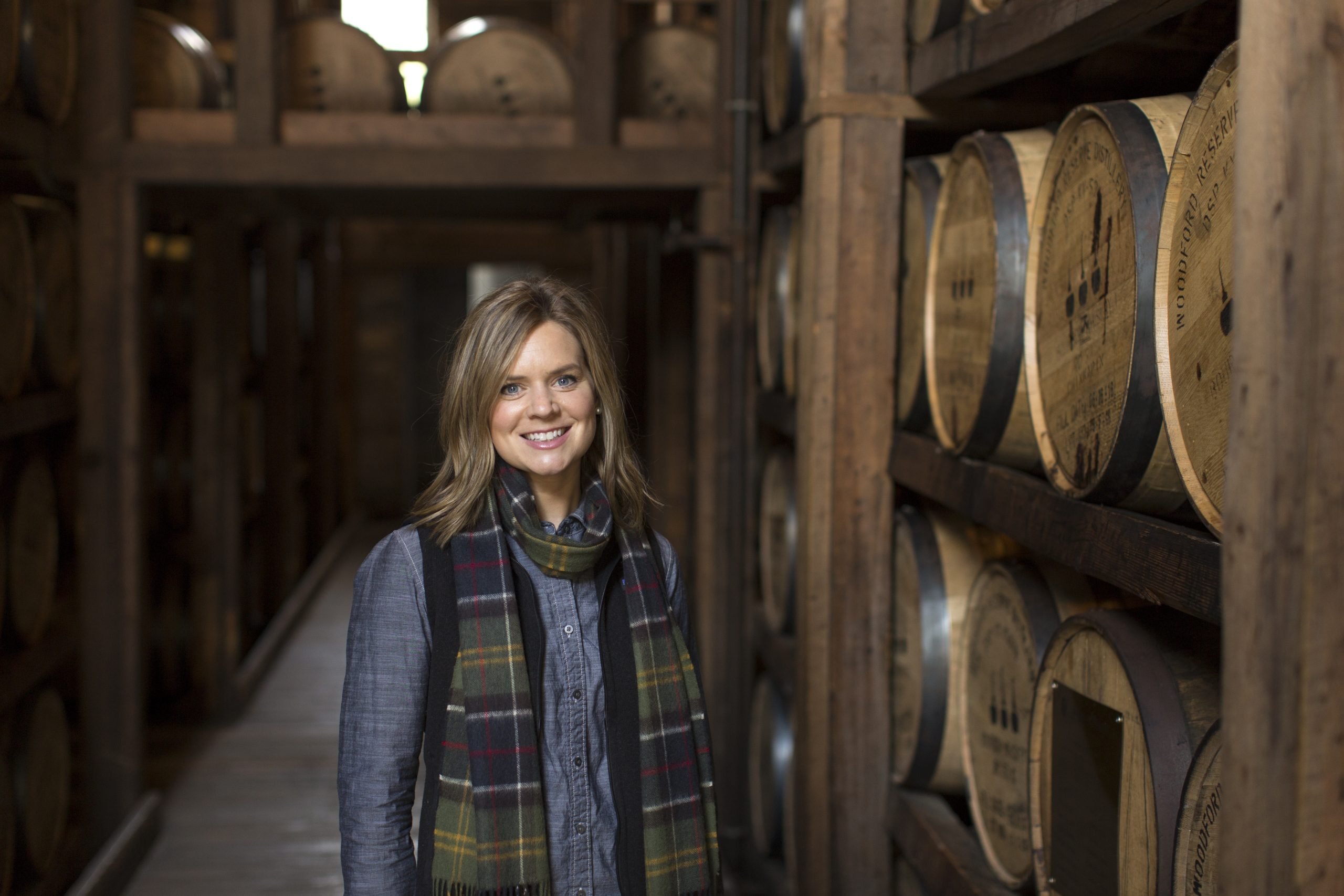
“Well, if you go back historically, women weren’t even accepted in bars. If you go back far enough, it’s like women, you don’t drink; if you do drink, you have a light cocktail, but never to get drunk—and you certainly shouldn’t go to the bar and you certainly shouldn’t go to a bar by yourself,” McCall says. “We have come so far. And now, women are ruling the bars, and we are the ones asking for the whiskey. So, it really has deep roots in, I think, just female etiquette and what’s acceptable, and we’re changing that every single day. I mean we have women, not only in this industry but leading this industry.”

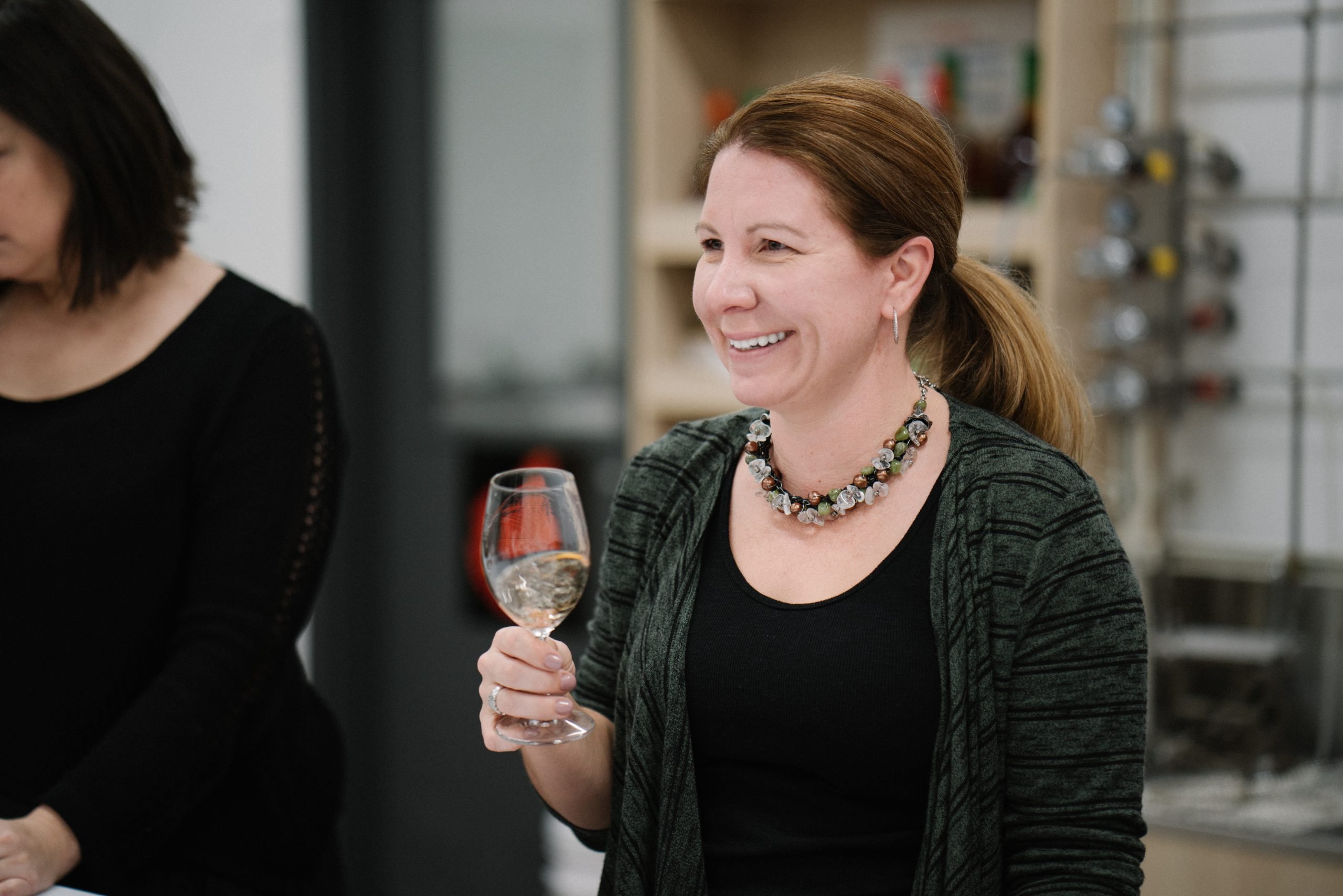
Rita Hansen, head distiller at E. & J. Gallo Spirits, says that, in part, this stigma of whiskey and comparable liquors being labeled a “man’s drink” has to do with the way it was and sometimes still is marketed.
“For years, the marketing showed a lot of men doing that consumption, and I think that’s changed,” Hansen says. “I think the stereotype really oversimplified the idea that men drink bourbon and brandy, and women drink rosés. But it really is about the consumer, and all consumers want a consistent, quality product regardless of what the category is. And I think everybody has their own specific taste profile and preferences. I also think the growth and explosion of the mixology category, or for mixologists in general, [has] people understand[ing] more about how to mix brown spirits…And I think that it opens the category up and makes it more approachable for both men and women. I think that’s one of the opportunities out there, right? Twenty years ago, you didn’t get to Google how to make a Brandy Crusta or a brandy cocktail. I think it was a little bit intimidating, and I think that really opened it up. There are so many great brandies, and so many great bourbons out there with these different profiles. And as consumers find out what profiles they like, they go back to those brands that offer consistent quality and that profile for them.”
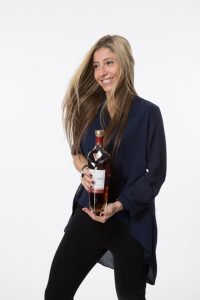 Samantha Leotta, previous brand director Americas for The Macallan, now global director of single malt scotch whisky at the Campari Group, echoes this sentiment, adding that for a long time, the brown liquor category wasn’t the most approachable for many women.
Samantha Leotta, previous brand director Americas for The Macallan, now global director of single malt scotch whisky at the Campari Group, echoes this sentiment, adding that for a long time, the brown liquor category wasn’t the most approachable for many women.
“The category itself is very intimidating, to be quite honest, probably like wine is. And I think it’s intimidating, not just for women, but also for younger and more diverse audiences,” Leotta (pictured right) says. “And now, I think women make up almost over 30 percent of whisky drinkers in the U.S. alone, and that number continues to grow.”

And with more women consuming whiskey, there are also more women entering the industry.
“I’ve seen a huge influx of women in the industry,” Hansen told Worth. “And the team that I work on, when I first started, I was not the first woman in the department. There have been a few before. But over the last 10 years, I mean there have been times in the department where we’ve been made up of 50 percent women, and it changes, as does every department. So, I really see it from our perspective here—there’s a lot of women that really are interested in distillation. I’ve also met a lot of women that own or manage craft distilleries. I know that there’s that image that it is a male-dominated industry, but I’ve found a lot of women partners out there that I maybe wouldn’t have initially expected. So, I don’t know that I see it as a roadblock, I’ve been given some amazing opportunities to be a part of the growth and the knowledge-building of California brandy…We’ve also seen a lot more of an influx of women in our intern program.”
As is true of many male-dominated industries, the more women see themselves represented, the more other women will feel comfortable entering, along with being able to see earlier in life that this is a career they could have.
“I think it’s important for other women to see them in these roles and know that they can enter the whiskey industry professionally,” Leotta says. “From a consumer perspective, I think that’s really helped to lead more women and bash those earlier perceptions that it is meant to be a man’s drink—and an older man’s drink at that.”
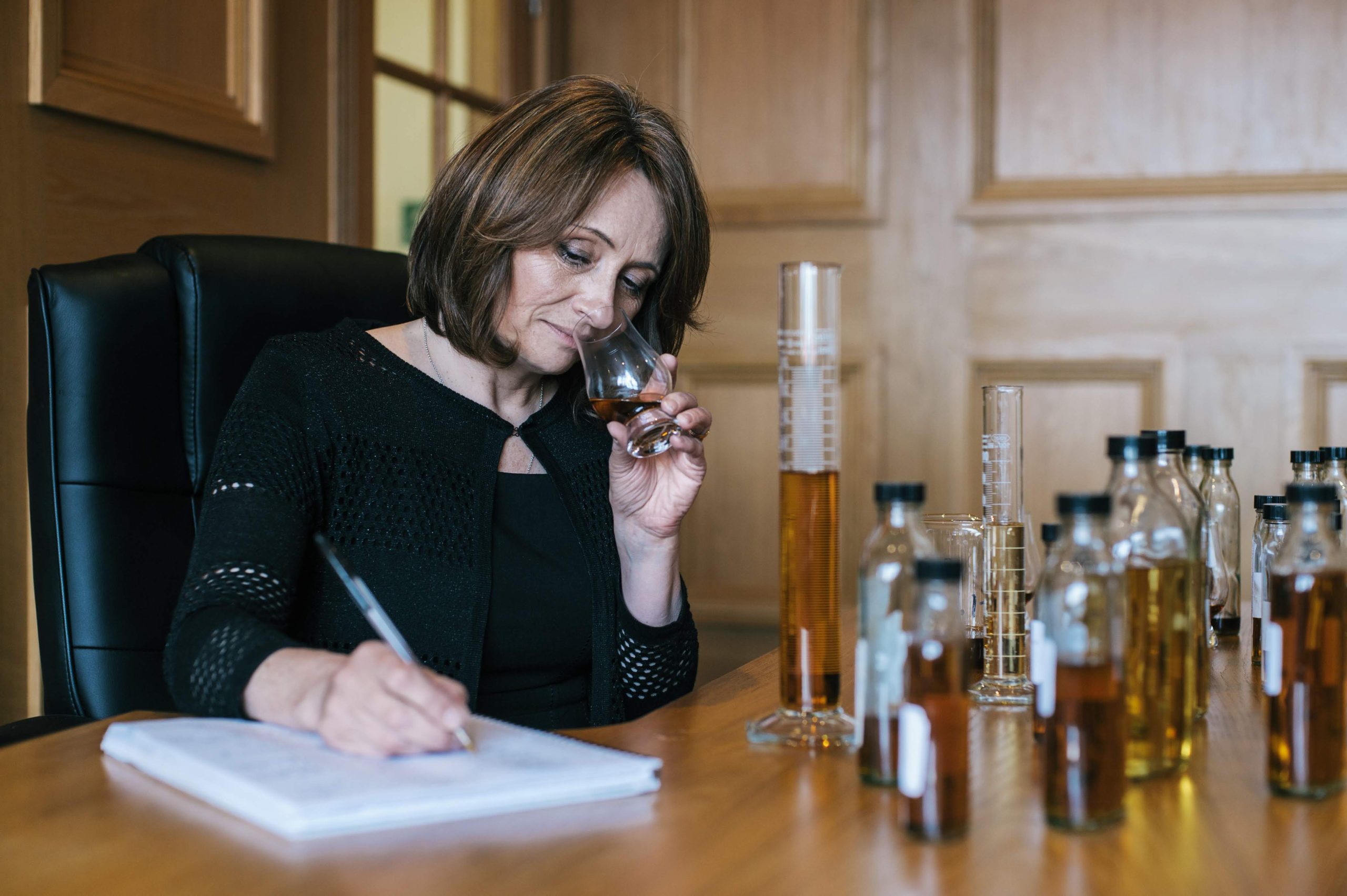
Dr. Rachel Barrie, a master blender at BenRiach and the first woman to ever be awarded an Honorary Doctorate of Science in whiskey from the University of Edinburgh, says part of the reason women historically might not have wanted to drink whiskey was due to the fact that most were blended whiskeys, which can offer a more bitter flavor than single malts.
“If you go [back], especially in the U.S., to the latter part of the 20th century, it was mostly blended scotch, so you know Johnnie Walker or Chivas or whatever, and it was blended scotch, and blended scotch almost has a bitterness to it, and it’s probably not as interesting because it doesn’t have the richness of dimensions, and it’s not as food-y as how you would talk about it,” Barrie says. “It’s difficult to kind of put your finger on it, but it’s not the same richness. The single malt really does that. And so, I think women might be put off more by the blended scotch side, which is a bit harder, harsher, you know, three-year-old blends, harsher notes—not as well-developed or as rich flavors.”
Barrie likens where whiskey is now to the wine industry in the 80s in Scotland, which became much more complex because of the many different varieties of wine that became available on the market. She points out that women really took to wine then because there was more to explore, making it more accessible for more women to find a wine that suited their palates.
“I think we’re following the path of…I suppose…the New World wines that people understand more about, and really breaking down the barriers,” Barrie says. “Now, you know, we have this transparency and this openness, this welcoming, as well as flavors that I think a lot of people will enjoy. We’re really opening the doors now. And I think that’s why, and especially through now, you know connectivity on the internet, I think, has been very empowering for women. I think we can engage more than ever before; I think the pandemic—it’s been terrible—one silver lining is this connectivity and sharing of taste…We’ve got this level of cerebral connectivity to the internet that I think is really empowering and is breaking down the barriers, very much so, and enabling the openness of communication to share the beauty of the world of flavor—be it food, be it wine, be it beautiful Speyside single malt and all the dimensions there are that really enrich our lives.”
So the question still remains, how do these women think we can power forward to debunk this myth that whiskey, and spirits like it, are a “man’s drink”?
“I think that by continuing to have conversations like we’re having right now…getting the word out there that women are driving the whiskey category and kind of keep on reiterating and sharing that message so that people build cognitive awareness of the fact that it is no longer just a man’s drink, that women are drinking whiskey,” McCall says. “And I think that you’ll see five years from now, it starts to drop off as being this oddity and it’s more commonplace. It’s just like going out and having a beer, where men and women enjoy beers, men and women enjoy whiskey, and it’s not an odd thing, but I think it just starts with these conversations and building awareness of it.”
Hansen agrees: “I think we keep doing what we’re doing, as there’s more female distillers out there, as there’s more I think media presence. We keep talking about it too, right? Just like for any other category in the area in which you want to enact and drive change…But I see even the marketing side, I mean there are a lot more [ads]—whether it’s print ads, whether it’s television—where they’re showcasing from a brand perspective, either the women that are behind the brand or they are showing women consuming it. And I think working on both sides as a business and continuing to network and develop that next generation of female distillers…I think that that’s really opened people’s eyes when you see these brands and products represented with both men and women. So, I think we’re heading in the right direction for sure…I’m really excited as I see more and more women.”
Leotta’s answer to this question echoes her colleagues’ sentiments.
“I think we continue on this path,” Leotta says. “We’ve made great strides as an industry. There’s still a lot of work to be done within the industry, but also from a consumption standpoint. I think it’s just spreading the word and making it accessible…making the information available.”
As for Barrie, she says that it is up to us, as women, to have the confidence to discover what we like as consumers and make room for ourselves at the often male-dominated table.
“I think we just open people’s minds. I think it’s for us, as women, to be curious, to be open-minded, to explore. You know, we want to discover the world of flavor as much as anyone else, so it is for us to be curious and to be courageous, as well, and be bold, have confidence—it’s your life. Have confidence in what we like, and have the courage to be part of it, and see what we think. I think that is the key. The opportunities now are huge for communication because [of the] internet,” Barrie says. “There’s so, so many forums for whiskey…When you start to look into it, it’s the probably the one spirit that just connects so many people in the world, I would say. It’s the richness and the diversity, it’s huge—probably because whiskey itself is the most diverse spirit in the world. So, it should bring ina very diverse range of consumers, the nature of whiskey celebrates that. I think we just have to keep influencing the future. You know, the typical, ‘be invited to the table, and if they don’t invite you to the table, invite yourself to the table.’”
This article was originally published on November, 12, 2022.
Sign up for the Women & Worth Summit taking place on April 26, 2023, here. 10

